Description
1. Botanical Overview:
-
Botanical Name: Zamioculcas zamiifolia
-
Common Name(s): ZZ Plant, Zed Plant, Zanzibar Gem, Eternity Plant
-
Family: Araceae
-
Native To: Eastern Africa (Tanzania, Kenya, and Zanzibar)
-
Plant Type: Perennial, herbaceous, and evergreen
2. Appearance:
-
Leaves: The ZZ Plant is known for its glossy, dark green, leathery leaves that grow on stiff, waxy stems. The leaves are feather-like in arrangement, growing in a pinnate pattern, giving the plant a unique appearance. The new leaves emerge as light green, gradually turning darker as they mature.
-
Stems: The plant has thick, shiny stems that store water, allowing it to survive periods of drought. These stems grow vertically, contributing to its upright, bushy appearance.
-
Growth Habit: The ZZ Plant has a clumping growth habit, and it can grow to 2–3 feet (60–90 cm) tall and about 2 feet (60 cm) wide when fully matured in indoor settings. It’s a slow grower, so it doesn’t require frequent repotting or space adjustments.
-
Flowers: The ZZ Plant rarely blooms indoors. When it does flower, the blooms are small and inconspicuous, typically appearing as a greenish spadix covered by a sheath. These flowers are not very ornamental and are usually hidden beneath the foliage.
-
Rhizomes: ZZ Plants have thick, tuberous rhizomes beneath the soil surface that store water. These rhizomes enable the plant to survive with little water for extended periods, making it very drought-tolerant.
3. Light Requirements:
-
Ideal Light: The ZZ Plant is very tolerant of various light conditions, including low light. However, it grows best in bright, indirect light.
-
Low Light Tolerance: One of the main reasons the ZZ Plant is so popular is its ability to thrive in low-light conditions, making it suitable for places with limited natural sunlight, such as offices, bathrooms, or rooms with small windows.
-
Direct Sunlight: Prolonged exposure to direct sunlight can scorch the leaves and cause them to become yellow or brown. If you have a spot with bright direct sunlight, it’s best to place the plant a little further from the window or use sheer curtains to filter the light.
4. Watering Needs:
-
Watering Frequency: The ZZ Plant is extremely drought-tolerant due to its rhizomes that store water. It only needs to be watered when the top 2 inches of soil are dry.
-
Signs of Underwatering: While the ZZ Plant can survive long periods without water, yellowing leaves and wilting may indicate that it needs water. The plant’s stems may also become a little shriveled.
-
Signs of Overwatering: Overwatering is the most common cause of problems with ZZ Plants. Signs of overwatering include yellowing leaves, root rot, and mushy stems. Always ensure the soil drains well and avoid letting the plant sit in water.
-
Watering Tip: When you do water, ensure you water thoroughly, but let the excess water drain out. Don’t let the plant sit in standing water, as this can lead to root rot.
5. Temperature & Humidity:
-
Temperature Range: ZZ Plants prefer warm temperatures between 18–24°C (65–75°F). They do not tolerate cold drafts well and should be protected from temperatures below 10°C (50°F).
-
Humidity: ZZ Plants are adaptable to average indoor humidity. They don’t require particularly high humidity levels, though they may benefit from a little added moisture in extremely dry conditions. Occasionally misting the plant or placing it near a humidifier can help, but they do well in average home humidity.
6. Soil & Potting:
-
Soil Type: ZZ Plants prefer well-draining soil. A cactus or succulent mix or a general-purpose potting mix with added perlite or sand works well for ensuring proper drainage. This helps prevent root rot, which is a common problem if the soil stays too moist.
-
Repotting: Since ZZ Plants grow slowly, they don’t need to be repotted frequently. Repotting every 2–3 years or when the plant becomes root-bound is usually sufficient.
-
Drainage: It is essential that the pot has drainage holes to allow excess water to escape. Standing water in the bottom of the pot can lead to root rot.
7. Growth & Maintenance:
-
Growth Rate: The ZZ Plant is a slow grower. It can grow between 6–12 inches per year, depending on its environment. The growth rate may increase with more sunlight, but it still remains relatively slow.
-
Pruning: Pruning is generally not necessary, but if the plant becomes too leggy or develops damaged leaves, you can trim it back to keep it looking neat. The ZZ Plant is self-healing, so any cuts will typically heal without issue.
-
Fertilization: ZZ Plants are not heavy feeders. Fertilize the plant only once or twice during the growing season (spring and summer) with a diluted, balanced fertilizer. Avoid fertilizing in fall and winter when growth slows.
-
Cleaning: ZZ Plants can accumulate dust on their leaves. Use a damp cloth to gently wipe the leaves clean, which will help the plant absorb more light.
8. Air Purifying Qualities:
-
The ZZ Plant is known for its air-purifying properties. It can help remove harmful substances from the air, including benzene, formaldehyde, xylene, and toluene. Having a ZZ Plant in your home can help improve indoor air quality.
9. Toxicity:
-
Toxic to Pets: Yes, the ZZ Plant is toxic to pets, including cats and dogs. The plant contains calcium oxalate crystals, which can cause irritation to the mouth, tongue, and digestive system if ingested. Symptoms include drooling, vomiting, and swelling.
-
Human Toxicity: ZZ Plants are also mildly toxic to humans if ingested. Handling the plant may cause skin irritation in some individuals. It’s a good idea to wear gloves when handling the plant and keep it out of reach of small children.
10. Benefits:
- Low Maintenance: ZZ Plants require minimal attention and are very forgiving, making them perfect for beginners or busy individuals.
- Resilient: They are highly drought-tolerant and can thrive on neglect, surviving in low light and with minimal watering.
- Air Purification: The ZZ Plant helps improve indoor air quality by filtering out harmful toxins and pollutants.
- Decorative Appeal: With its glossy, upright foliage, the ZZ Plant adds a touch of elegance and greenery to any space, making it a great indoor decorative plant.
- Durability: The ZZ Plant can live for many years with proper care, making it a long-term companion in your home or office.
11. Common Problems:
- Yellowing Leaves: This could indicate overwatering, insufficient light, or nutrient deficiencies. Check the soil moisture and light conditions.
- Root Rot: Overwatering or poor drainage can lead to root rot. Ensure the plant is not sitting in water and use a well-draining soil mix.
- Leaf Drop: The plant may drop leaves if it’s stressed, especially from temperature fluctuations, overwatering, or low light.
- Pests: ZZ Plants are generally pest-resistant, but they may occasionally face issues with mealybugs, spider mites, or scale insects.



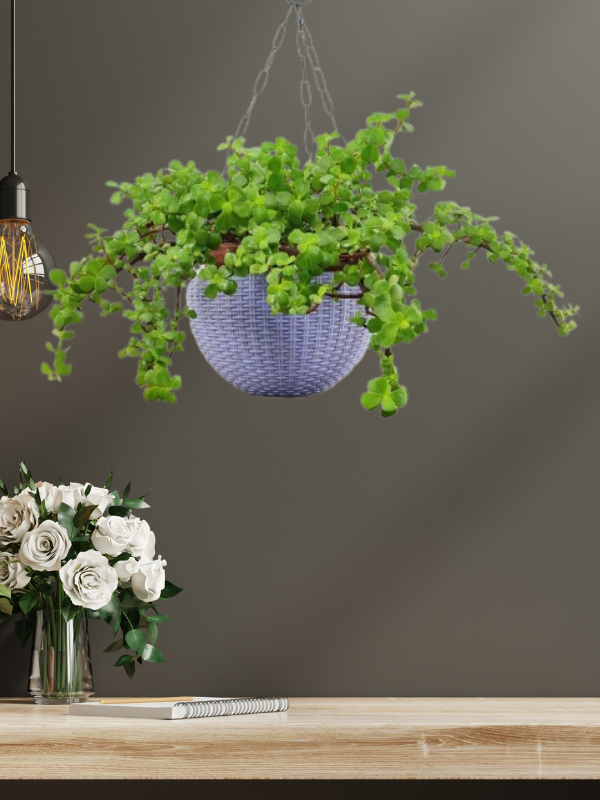

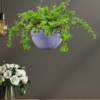


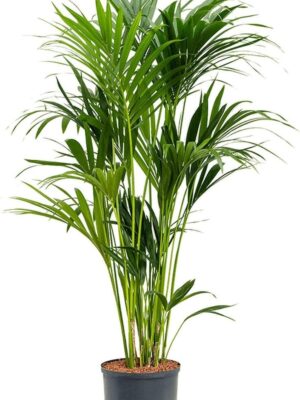
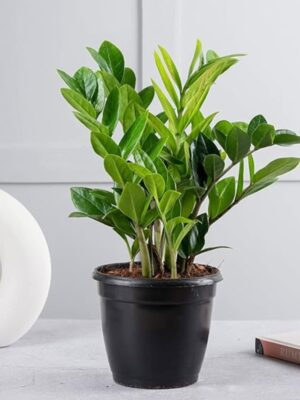
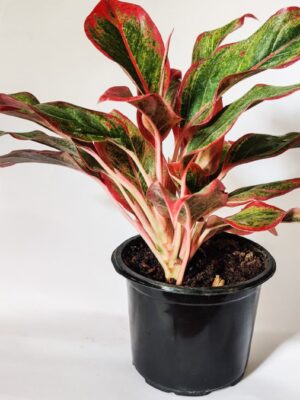
Reviews
There are no reviews yet.